The blockchain world has become a rapidly evolving field where new projects emerge every day. However, in this rapidly growing sector, many networks face fundamental challenges such as scalability and transaction capacity. This is where Zilliqa comes into play. Zilliqa promises to effectively solve one of the biggest problems of blockchains, transaction speed and scalability, with sharding technology. It aims to revolutionize the fields of decentralized finance (DeFi), gaming, NFT and Web3 by offering both high transaction capacity and low-cost transactions. So how does Zilliqa work and what are the features that distinguish it from other blockchain projects? Let's examine Zilliqa in this detailed guide!
Definition and Emergence of Zilliqa
To understand Zilliqa, it is necessary to first look at its definition and emergence process. What is Zilliqa? Zilliqa is an innovative blockchain platform designed to increase scalability and transaction efficiency using sharding technology. Thanks to this approach, the Zilliqa network is divided into small pieces called shards, so it can perform transactions in parallel (as a parallel transaction blockchain project). In this way, Zilliqa offers a solution to the scalability limitations of previous generation networks, especially Ethereum. The platform's native cryptocurrency is called ZIL coin (ZIL token). The features of ZIL coin are also shown as being used in intra-network transactions, smart contract transactions and applications. In summary, we can answer the question of what ZIL coin is as follows: It is the Zilliqa blockchain's own cryptocurrency and is at the center of all economic transactions on the network.
The emergence of the Zilliqa project is based on an academic foundation. As a result of research conducted within the National University of Singapore (NUS), the concept of Zilliqa began to be developed in 2017. This research team aimed to solve the scalability problem faced by large blockchains such as Bitcoin and Ethereum. The project was officially announced in 2017 after the development process. Following the announcement, its technical report, namely the whitepaper, was published. The system reached maturity with various testnet versions. Finally, the Zilliqa mainnet was officially launched on January 31, 2019. The mainnet launch was a turning point in the transfer of the sharding technique from theory to practice. Moreover, ZILs, which started to be used as ERC-20 tokens on Ethereum, were converted to native tokens on their own blockchain - a token swap was performed. In this way, the network became completely independent.
So how does the Zilliqa network work? The answer to this question lies in the architecture of the platform. Zilliqa divides its network into multiple shards, allowing each to execute transactions independently of the others in parallel. So, what exactly is sharding? To put it briefly, it means dividing a blockchain network into smaller pieces to share the workload. In this way, Zilliqa can scale its transaction capacity linearly as the number of nodes joining the network increases. For security and accuracy, Zilliqa uses a hybrid consensus mechanism. The mining-based Proof of Work (PoW) algorithm, which is also used in Bitcoin, is used in a limited way, only to assign nodes' identities and shards.Then, the Byzantine Fault Tolerance (pBFT) protocol is used to confirm transactions within each shard.
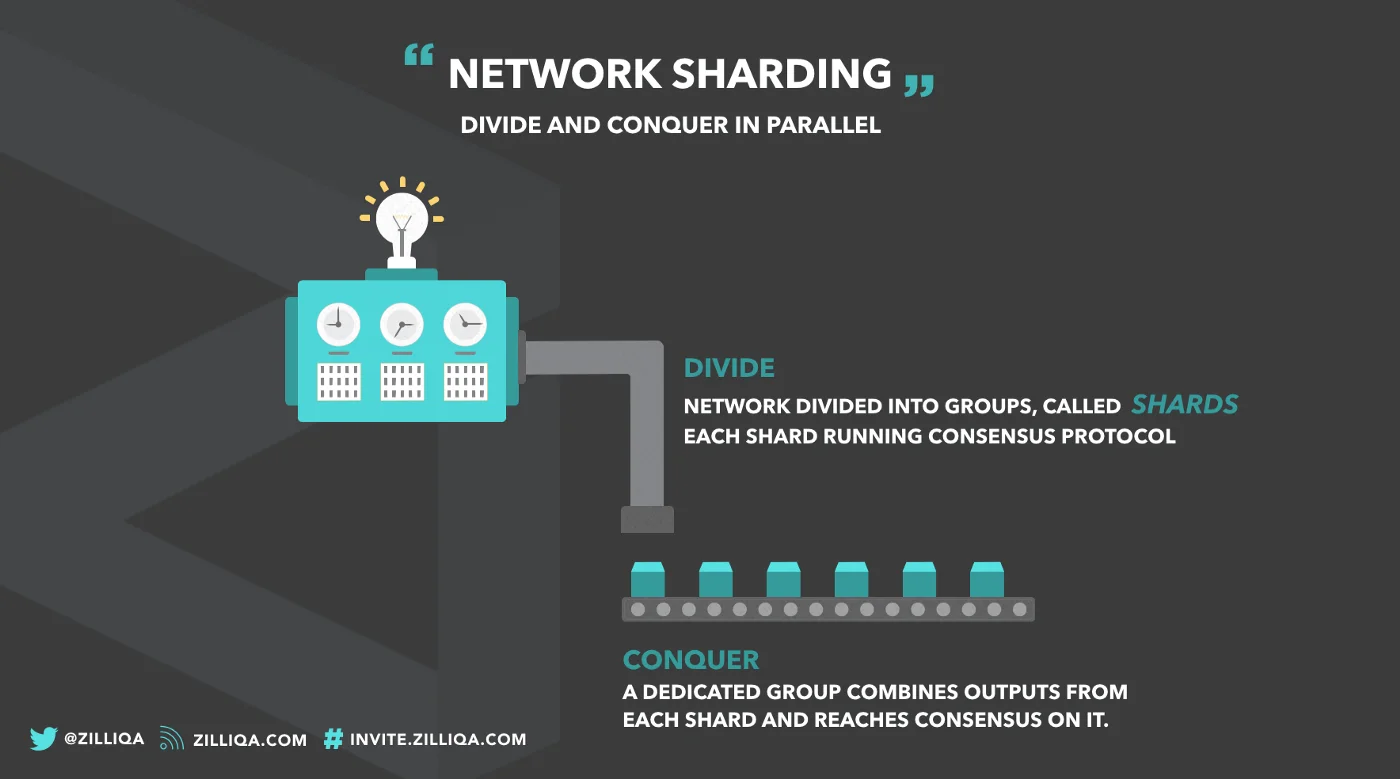
Zilliqa also has smart contract support and uses a special programming language called Scilla, which it developed in order to ensure contract security. Scilla is an important part of the technical infrastructure of the platform as a safe-by-design language that minimizes smart contract vulnerabilities.
Zilliqa's History: Important Milestones
Zilliqa is a relatively old token, so it has experienced many important milestones in its development process. This process is full of critical changes both technically and in terms of the ecosystem. Therefore, understanding the history of Zilliqa is very important in order to see the development of the project and how it achieved its goals. Let’s take a closer look at the key moments and milestones in Zilliqa’s entire history and explore how this journey took shape…
2017-2019: Project development stages
The Zilliqa project was announced in June 2017 and the development team officially started work. Throughout 2018, various testnet versions were released to test the platform’s performance and security. Then, on January 31, 2019, the Zilliqa mainnet was successfully launched. With this launch, Zilliqa became the first public blockchain to use sharding and gained its own mainnet. ZIL tokens, which were temporarily distributed in the ERC-20 format on the Ethereum blockchain, began to be used in users’ own wallets and on the network as the native coin of the Zilliqa network after this date.
2020: Many new features came to the network
The Zilliqa network took important steps in 2020 and the ecosystem grew rapidly. In October 2020, Zilliqa launched on-chain and non-custodial staking on the mainnet. As of October 14, 2020, users were able to stake their ZIL tokens for the first time, and over 1 billion ZIL were staked in just a few hours. Also in October, the first decentralized exchange (DEX) on Zilliqa, the ZilSwap platform, went live on October 5, 2020. This DEX was remembered as a significant step that marked Zilliqa’s entry into the decentralized finance (DeFi) space.
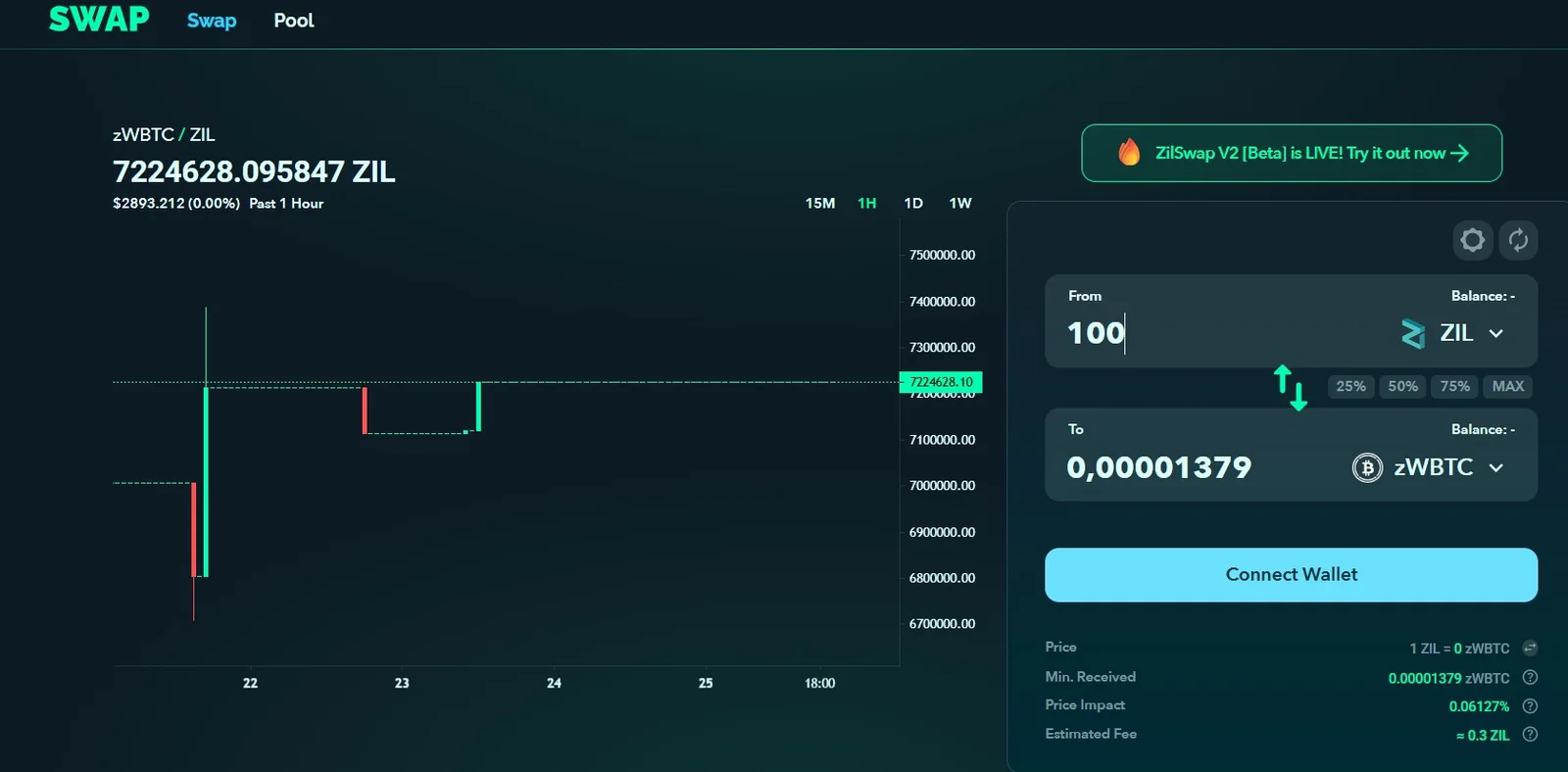
2021: NFT step taken
The Zilliqa ecosystem moved beyond decentralized finance in 2021. It also developed in the areas of non-fungible tokens (NFTs) and digital content that became popular in those years. In September 2021, Zilliqa rolled up its sleeves to open an NFT marketplace on the ZilSwap platform. With the announcement of this NFT platform, launched in partnership with Switcheo Labs, a special NFT collection of 10,000 units called “The Bear Market” was offered to the Zilliqa community.

2022: Entering the Metaverse
Zilliqa made an ambitious entry into the metaverse in early 2022. Announced in January 2022, Metapolis emerged as a comprehensive XR (Extended Reality) metaverse platform developed by Zilliqa and defined as “metaverse-as-a-service.” Metapolis aimed to offer customizable virtual “cities” and digital experiences for brands, content creators, and users by building on Zilliqa’s scalable and secure blockchain infrastructure.
This step also positioned Zilliqa as a gaming and entertainment-focused platform in the Web3 world. In fact, in September 2022, Zilliqa announced its own Web3 game console project for the blockchain-based gaming industry. This special game console is an innovative device that aims to allow players to mine ZIL tokens and earn money while playing games with its integrated crypto wallet and mining software.
2023: Zilliqa 2.0 plan announced
The Zilliqa network came to the fore in 2023 with important updates and corporate collaborations. In September 2023, the Zilliqa team announced a major protocol upgrade plan called Zilliqa 2.0. This update aimed to speed up the consensus algorithm, improve sharding capacity and bring Ethereum Virtual Machine (EVM) compatibility to increase the performance and functionality of the network. It is stated that Zilliqa 2.0 is designed to maintain backward compatibility so that the existing ecosystem can seamlessly transition to the new version. It also allows EVM-based smart contracts to run on Zilliqa.
In the same year, Zilliqa signed important strategic partnerships. The collaboration with Google Cloud in particular drew attention. With the partnership announced in September 2023, Zilliqa reached an agreement to increase the scalability and durability of the network using Google's cloud infrastructure. In this way, Zilliqa joined the projects that offer enterprise-level blockchain solutions and proved that it can integrate into different sectors.
In addition, in 2023, Zilliqa renewed its corporate structure under the name Zilliqa Group. With this structure, which evolved from Zilliqa Research, it announced its goal of becoming an ecosystem company focused on developing Web3 and blockchain applications through different subsidiaries.
Why is Zilliqa Valuable?
Zilliqa's value is revealed not only by its technical infrastructure, but also by its application areas and the opportunities it provides. In general, it has areas of use in many sectors with its secure smart contracts, DeFi, NFT ecosystem and Web3 infrastructure. Let's examine in more detail why Zilliqa is so valuable...
Scalability and high performance
One of the biggest advantages of Zilliqa is that it can offer high scalability and transaction capacity (TPS). Thanks to the sharding architecture, the network’s processing power theoretically increases with each additional node joining the network. In fact, in the test environment, approximately 2828 transactions per second (TPS) were performed with 6 shards (approximately 3600 nodes), demonstrating the network’s scalability.
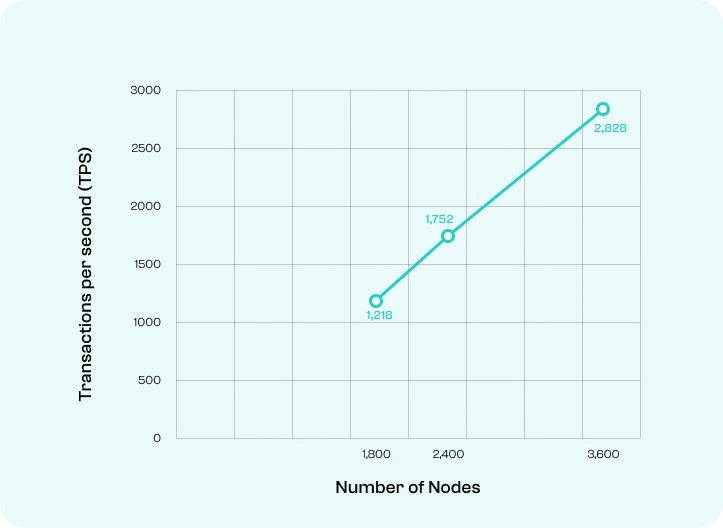
In addition, thanks to Zilliqa’s finality feature, transactions are finalized in a single block. In other words, there is no need to wait for multiple block confirmations, as in Bitcoin or Ethereum. As a side effect of high efficiency, transaction fees are also extremely low: Even micropayments can be made economically since fees remain low on the network. This combination provides the key performance features that make Zilliqa attractive to both users and developers.
Security and smart contracts
Zilliqa created a special smart contract language to increase scalability while not compromising on security. The Scilla language was developed by Zilliqa and is designed to encourage secure coding. This language is structured to minimize problems such as reentrancy, which is common in contract languages on other platforms. Scilla uses the functional programming paradigm and offers a formal verifiability opportunity. In this way, the behavior of smart contracts becomes more predictable and auditable. DApps, DeFi protocols or NFT smart contracts developed on Zilliqa operate in a more secure environment thanks to Scilla.
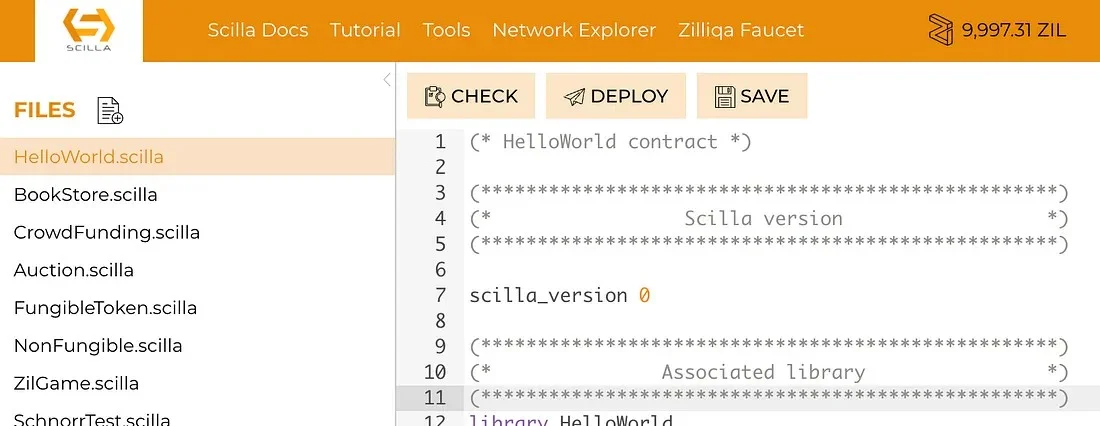
Extent of ecosystem and usage areas
Zilliqa, as a comprehensive Web3 infrastructure network, hosts projects in many areas such as finance, gaming, and digital art. Especially on the DeFi side, the protocols developed on Zilliqa attract attention. For example, thanks to ZilSwap DEX, users can make buy-sell transactions between their tokens on the Zilliqa network with the automatic market maker (AMM) model and contribute to liquidity pools. Zilliqa also plays an active role in the NFT ecosystem: Zilliqa NFT marketplace platforms enable artists and collectors to mint, buy and sell NFTs. High transaction speed and low cost allow such NFT and gaming applications to run smoothly on Zilliqa.
The area of use of the ZIL token is also quite diverse in this context: ZIL is actively used in transactions such as payment of transaction fees on the network, transfer of value in decentralized applications, NFT marketplace transactions, providing liquidity, and similar transactions. For example, it is possible to buy NFTs with ZIL, provide liquidity on DEX, or pay service fees in decentralized applications.
Zilliqa is also establishing integrations with the real world. In 2020, ZIL was added to the payment options of travel booking platform Travala, and users can book over 3 million hotels and flights with ZIL.
Staking and community participation
Zilliqa staking is a mechanism that allows ZIL token holders to both contribute to network security and earn passive income. Users can participate in the network's consensus process by locking their ZIL coins to Zilliqa's validator nodes (Staked Seed Nodes). In this way, they help secure the network and earn ZIL rewards at regular intervals in return. Staking returns are designed to provide an annual gain of approximately 6 percent, although they vary depending on the participation rate.
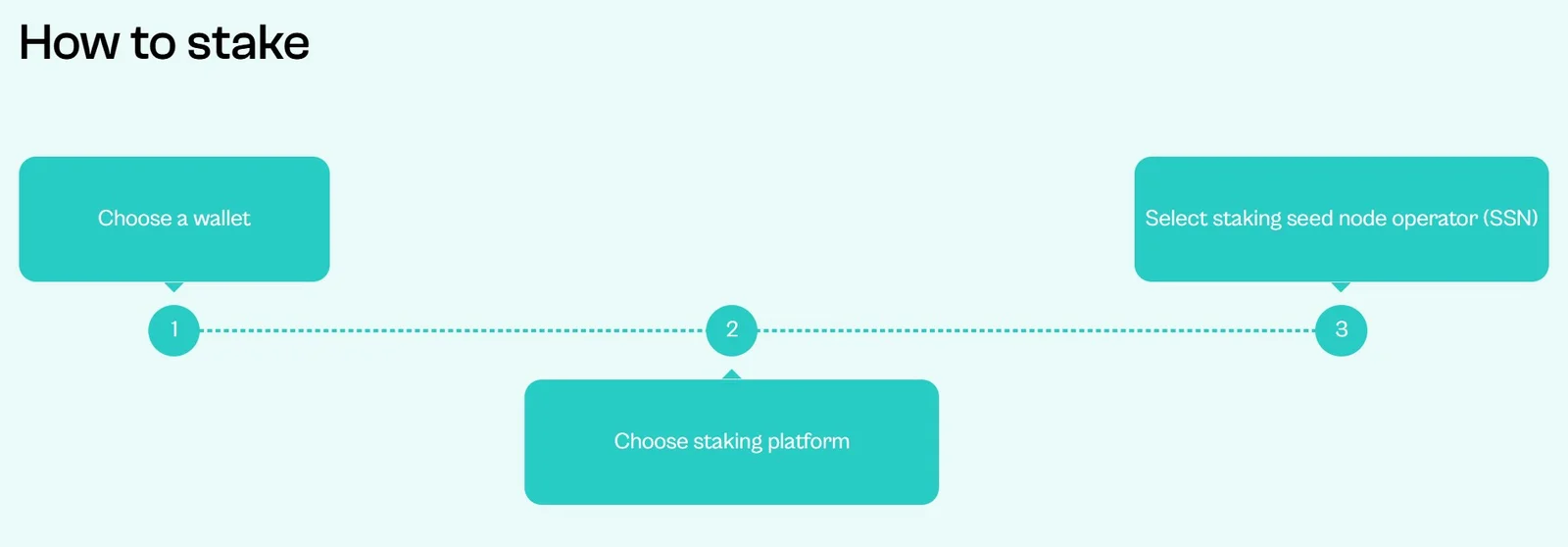
Who is the Founder of Zilliqa?
Who is the Founder of Zilliqa? Zilliqa is a project founded by a team, not a single person. This founding team, which came together in 2017, shared a vision of making blockchain technology scalable. The co-founders of the Zilliqa project include cryptography researcher Amrit Kumar, computer scientist Dr. Prateek Saxena, software engineer Dr. Xinshu Dong, financial sector expert Juzar Motiwalla, and entrepreneur Max Kantelia.
These names laid the foundations of Zilliqa by combining their experiences in academia and industry. For example, Dr. Prateek Saxena is known for his academic work on blockchain at NUS, while Amrit Kumar brought his expertise in security and cryptography to the project. Xinshu Dong served as the first CEO and led the technical development of the platform.
Amrit Kumar is the most well-known founding member among them. So who is Amrit Kumar? Amrit Kumar was one of the leading co-founders of the Zilliqa project and served as the platform's long-time president and chief scientific officer. Kumar, who has a PhD in cryptography, worked as a researcher at the National University of Singapore (NUS) before founding Zilliqa and specialized in academic solutions to the question of what sharding is in blockchain.
Together with his advisor Dr. Prateek Saxena at NUS, he played a critical role in the process of transforming the theoretical sharding concept into a commercial blockchain network. Amrit Kumar guided the project in many stages from the establishment of Zilliqa to the growth of the ecosystem. After leaving his active duties at Zilliqa at the end of 2021, he continues to work with different initiatives in the blockchain world.
Frequently Asked Questions (FAQ)
Below are some frequently asked questions and answers about Zilliqa:
- What is Zilliqa and how does it work?: Zilliqa is a blockchain platform that uses sharding technology and can offer high scalability. Sharding divides the network into smaller pieces, allowing each shard to process independently, thus increasing the network's transaction capacity and speed. Zilliqa can support thousands of transactions per second with its parallel processing architecture.
- What does ZIL coin do?: ZIL is the native token of the Zilliqa network and is used for different functions such as paying for transactions on the network, staking, and governance. In addition, the question of what does ZIL token do can be answered as follows: It is also used to process decentralized platforms such as DeFi applications and NFT marketplaces.
- How is sharding technology implemented in Zilliqa?: Zilliqa increases its transaction capacity with each additional node joining the network using sharding technology. Sharding divides the network into smaller pieces (shards) and each shard processes transactions in parallel. This method allows Zilliqa to offer much higher transaction speed and scalability.
- How is Zilliqa staking done?: Zilliqa staking allows ZIL token holders to contribute to network security by locking their tokens to network validators and earn rewards in return. Users can earn around 6% annual staking returns by depositing their ZIL tokens into Zilliqa validator nodes (Staked Seed Nodes). Staking helps participate in the network's consensus mechanism and increase Zilliqa's security.
- What is the Scilla language, why is it different?: Scilla is a programming language developed by Zilliqa used to write secure smart contracts. Unlike other smart contract languages, Scilla uses the functional programming paradigm and offers formal verification. This feature makes the behavior of contracts more reliable and error-free, thus minimizing potential vulnerabilities (e.g. re-entry attacks).
Follow our JR Kripto Guide series to learn about Zilliqa, a prominent Layer-1 project with high processing power, and the use of the ZIL token